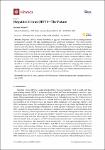Hepatitis E virus (HEV)—The Future
Denner, Joachim
Hepatitis (HEV) is widely distributed in pigs and is transmitted with increasing numbers to humans by contact with pigs, contaminated food and blood transfusion. The virus is mostly apathogenic in pigs but may enhance the pathogenicity of other pig viruses. In humans, infection can lead to acute and chronic hepatitis and extrahepatic manifestations. In order to stop the emerging infection, effective counter-measures are required. First of all, transmission by blood products can be prevented by screening all blood donations. Meat and sausages should be appropriately cooked. Elimination of the virus from the entire pork production can be achieved by sensitive testing and elimination programs including early weaning, colostrum deprivation, Caesarean delivery, embryo transfer, treatment with antivirals, protection from de novo infection, and possibly vaccination. In addition, contaminated water, shellfish, vegetables, and fruits by HEV-contaminated manure should be avoided. A special situation is given in xenotransplantation using pig cells, tissues or organs in order to alleviate the lack of human transplants. The elimination of HEV from pigs, other animals and humans is consistent with the One Health concept, preventing subclinical infections in the animals as well as preventing transmission to humans and disease.
Dateien zu dieser Publikation

